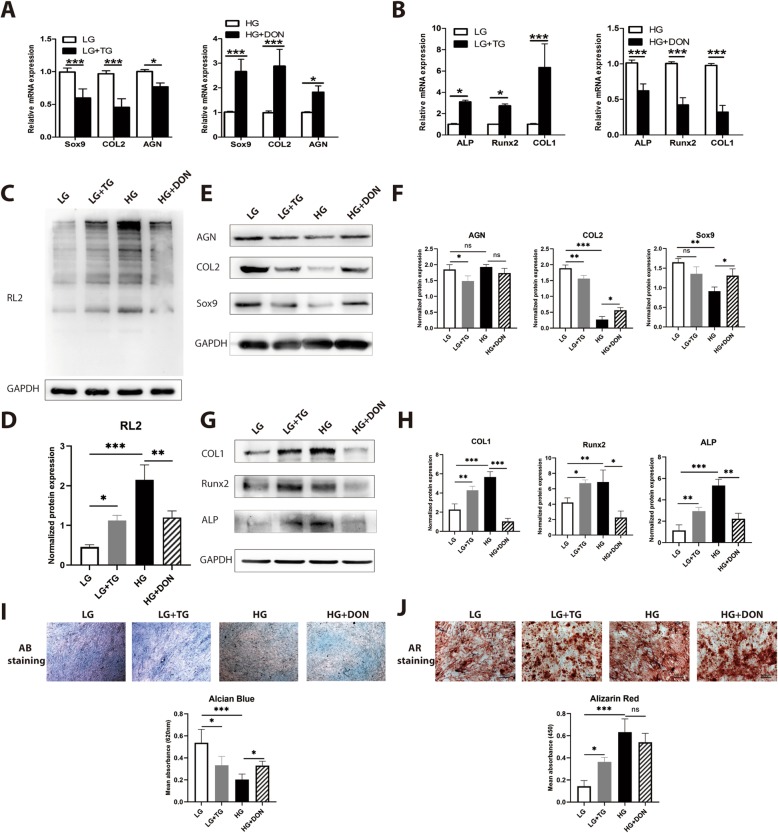Fig. 3.
O-GlcNAcylation was responsible for high glucose-induced chondro-osteogenic differentiation. CESCs assigned to LG and HG + DON groups, in which the O-GlcNAcylation of proteins should be relatively low. CESCs assigned to LG + Thiamet-G (TG) and HG groups in which O-GlcNAcylation of proteins should be relatively high. CESCs were induced under low-glucose and high-glucose conditions in basic medium (c), chondrogenic induction medium (CIM) (a, e, i), or osteogenic induction medium (OIM) (b, g, j), respectively, for 21 days. b Sox9, COL2, and AGN gene expression were assessed by Q-PCR of mRNA from CESCs induced in CIM. b Runx2, ALP, and COL1 gene expression were assessed by Q-PCR of mRNA from CESCs induced in OIM. c, d Western blot (c) and analysis (d) of protein O-GlcNAcylation in each group. The protein contents were normalized according to GAPDH level. e, f Western blot (e) and analysis (f) of expressions of Sox9, COL2, and AGN of CESCs induced in CIM. The protein contents were normalized according to GAPDH level. g, h Western blot (g) and analysis (h) of expression of Runx2, COL1, and ALP of CESCs induced in OIM. The protein contents were normalized according to GAPDH level. i, j Macrographs of Alcian blue staining and Alizarin red staining and analysis of CESCs treated under the conditions in e and g. Data represent the mean ± SD (n = 3 independent experiments, one-way ANOVA). *p < 0.05, **p < 0.01, and ***p < 0.001

